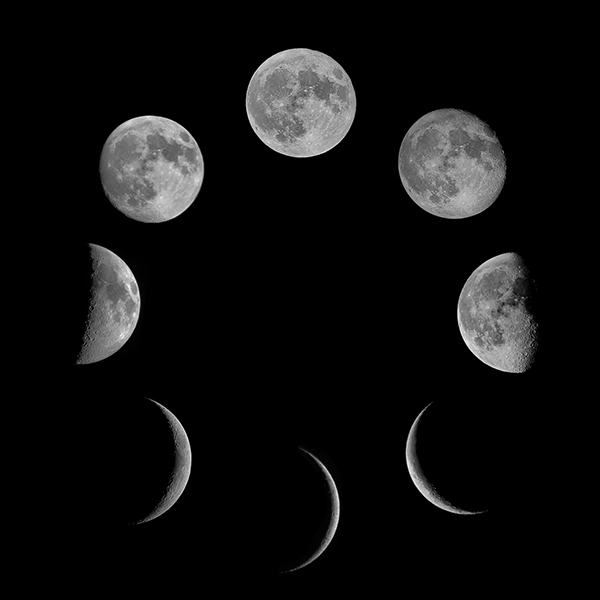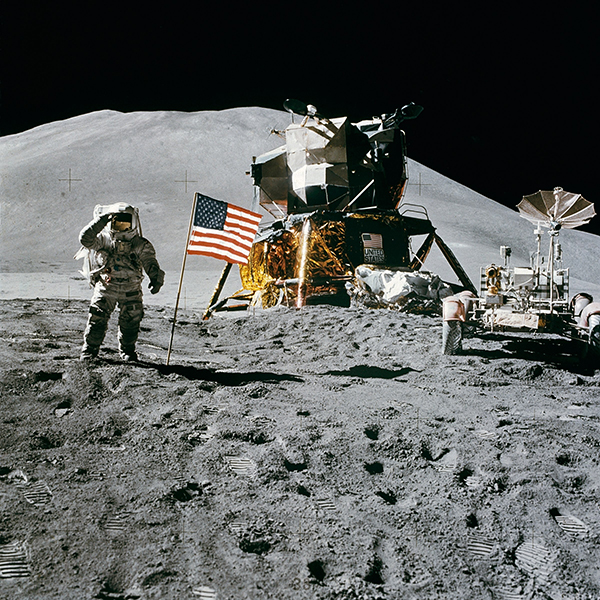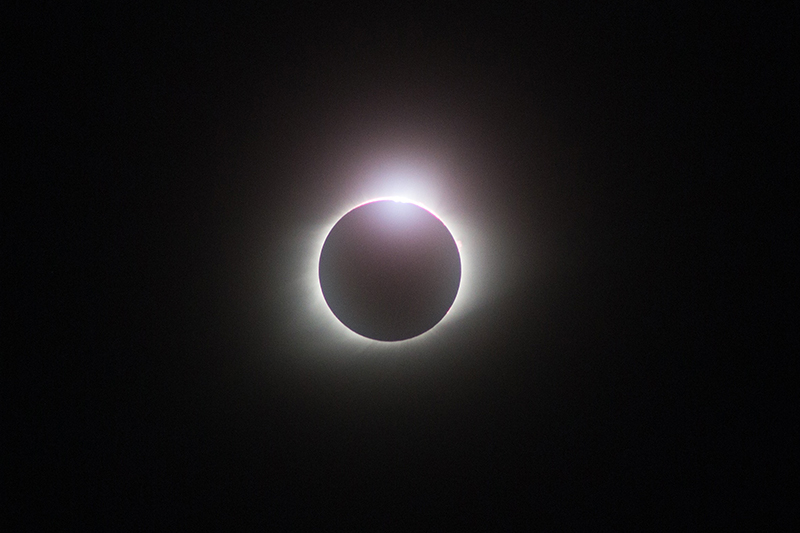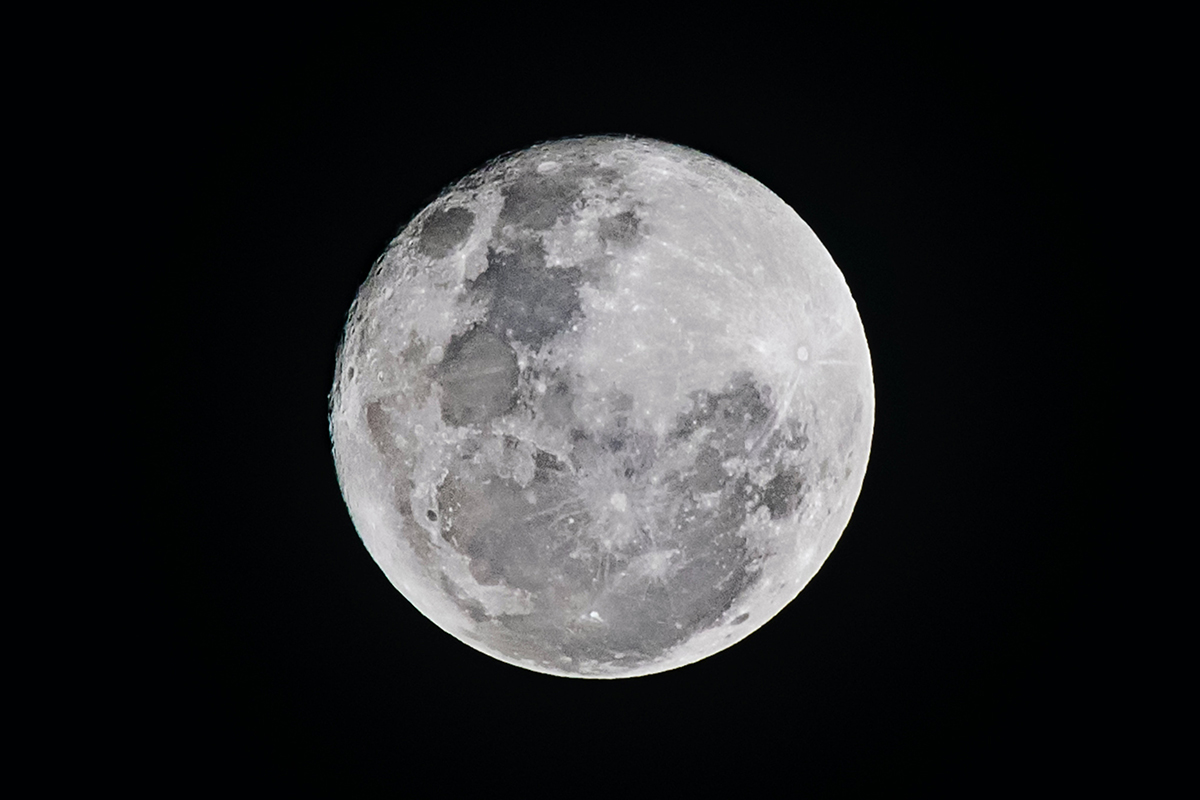The Moon is the Earth's only natural satellite, the closest and best known star. It orbits the Earth in a period of about a month and rotates around its own axis in the same amount of time, so its rotation is essentially "captured" and its "hidden" side (the one we do not see because it never points towards us) has only been photographed and studied by the Apollo missions in the 1960s and 1970s. The Moon exerts various gravitational influences on the Earth - such as rising tides - and is primarily responsible for the nutation land.
Curiosities of our satellite
The Moon is quite large in proportion to the Earth, the ratio being 1:3. This is why we talk about an Earth-Moon system, where if an analogy were made in size, the Earth would be like a basketball, and the Moon like a tennis ball.
The Moon is a synchronously rotating ("tidally locked") star, meaning that its rotational period is equivalent to its orbital period, resulting in us always seeing the same "face". Due to the different positions it adopts during its orbital movement, from our perspective we will see changes in the portion of the Moon illuminated by the Sun, that is, we see a cycle of "phases", where a complete lunar cycle (lunation) takes 29.5 days.

Regarding the lunar origin, the most widely accepted mechanism is currently that of a great impact, which would have taken place 4.5 billion years ago (at the height of the formation of the Solar System), when an object the size of Mars ("Theia") collided with the Earth and, after that, the ejected debris would have remained in orbit, until they joined together through accretion processes and formed a single body that became our Moon. Its internal properties, orbital motion dynamics and lunar samples, among other evidence, generally support this theory of its origin.
The Moon has been extensively explored by space probes. The first of these was the USSR's Moon program, with unmanned spacecraft that photographed, orbited, impacted or landed softly on the lunar surface; The Luna 16 mission managed to bring back a few grams of lunar dust from the surface.
The Ranger program (USA) impacted spacecraft against the lunar surface to obtain detailed images. Other programs included cartographic and atmospheric objectives for a future manned mission, which culminated with NASA's Apollo Program on July 20, 1969, when Neil Armstrong became the first human being to set foot on the surface of the Moon.

Subsequently, the Clementine, Lunar Prospector (NASA) and SMART-1 (ESA) missions, among many others, have continued to explore the lunar surface to achieve various objectives, many aimed at converting the Moon into a base of operations and way station for missions. to other corners of the Solar System. Currently, NASA carries out its Program Artemis, seeking to return humans to the Moon before 2030.
A common related phenomenon is solar eclipses. These occur when the Moon crosses the ecliptic at the same point where the Sun is, completely hiding it for a few minutes.
This phenomenon is a mathematical coincidence, since the Moon is 400 times smaller than the Sun, but it is 400 times closer to the Earth than the Sun, so we see the solar and lunar disk of the same size.

The Moon, however, is not always at the same distance from the Earth; It has a perigee (moment of greatest closeness) and apogee (moment of greatest distance), due to its elliptical orbit. Thus, in certain solar eclipses, the Moon will appear somewhat smaller and will not completely cover the solar disk, giving way to a annular solar eclipse.
| CHARACTERISTICS | |
| Diameter | 3,475 km |
| Mass | 7,349 x 1022 kg |
| Density | 3.34g/cm3 |
| Gravity | 1.62 m/s2 |
| Surface temperature | -23 ºC (med) |
| Axial inclination | 1.54° |
| Escape velocity | 2.37 km/s |
| Rotation | 27d 7h 43m |
| Translation | 27d 7h 43m |
| Orbital speed | 1km/s |
| Eccentricity | 0,0549 |
| Albedo | 0,12 |
| Distance to Earth (average) | 384,400 km |
| Relationship with the Earth | 1:3 |


